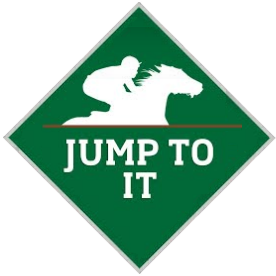
Vincent Finegan
Shark Hanlon suspension
 Shark Hanlon hugging Hewick after his King George victory
Shark Hanlon hugging Hewick after his King George victory
© Photo Healy Racing
Shark Hanlon could never have imagined as he loaded a deceased horse onto a trailer on 14 June that his actions that day would lead to him being banned from training horses.
Even the dimmest amongst us would instinctively know that transporting the exposed carcass of a dead racehorse in an open trailer through towns and villages could lead to disastrous consequences. To do so while driving a horsebox with your name blazoned across it would be so stupid that it could only have happened by accident.
According to Hanlon he had covered the carcass with a tarpaulin, but a combination of not securing it adequately and backdraft from his horsebox caused the covering to become completely detached from the vehicle within the first two miles of his journey. A restricted view of the trailer from the cab of his horsebox meant that he didn’t discover the issue with the exposed carcass until arriving at his destination.
If we believe his version of the events it was a combination of unfortunate circumstances that led to the incident and while the timing was particularly bad, as it came just one week after the RTÉ Prime Time investigation into animal abuses at an abattoir in Straffan, it might seem harsh for him to lose his licence if we look at the incident in isolation.
That said, there can be no doubt that incidents like this severely undermine the standing of the sport with the general public and something has to be seen to be done by the authorities.
Horse racing has an uncanny knack of repeatedly shooting itself in the foot when it comes to matters of integrity and welfare and for those who do damage to the sport’s reputation there needs to be proportionate and consistent penalties.
The structuring of the penalties imposed on Hanlon in this case were most interesting. In order to close the gap that led to Tony Martin “bringing the game into disrepute” earlier this year when he turned up in the winners’ enclosure at Newcastle while his licence was suspended, the Referral Committee has added a number of clauses to Hanlon’s suspension.
He is banned from holding a trainers’ licence for 10 months, but can apply to have the final 5 months of the ban suspended if he adheres to the following requirements during the initial period of the ban:
1) Not to knowingly participate in training-related activities or gallops,
2) Not to issue instructions to any jockey or other trainer as to the training or riding of
any horse,
3) Not to enter or attempt to enter any weigh-room, parade ring or any other area of a racecourse restricted to licensees of the IHRB.
These requirements should have always been part of the general rules so that anyone that has their licence withdrawn must actually desist from all activities associated with training, rather than the token change of name on the licence which has been the only official sanction up to now.
Another intriguing aspect to this case is the language used by the Referral Committee when talking about the publicity this incident garnered simply because Shark Hanlon had used his branded horsebox rather than a jeep.
The Committee “was satisfied that the IHRB had established that Mr Hanlon was in breach of Rule 272(i), by reason of the fact that he transported a deceased animal through Paulstown in a completely uncovered state, using a highly identifiable horsebox, which caused significant prejudice to the integrity, proper conduct and good reputation of the sport of horse-racing.”
Later on in the published verdict the Committee says: “He ought to have appreciated the need for caution, and that any deficiencies in this process would have been magnified, as they actually were, by the large, personalised and readily identifiable markings on his horsebox.”
And: “By 16 June, Mr Hanlon was undoubtedly as aware as anyone of the heightened public sensitivity to equine welfare issues arising from the RTE broadcast, and this awareness ought to have informed his actions on that day. He was also well aware of his public prominence as a successful trainer, specifically referenced by the distinctive “#TeamHewick” logo on his horsebox. His gross negligence in the transport of the carcass was therefore particularly injurious to the good reputation of the sport when taken in that context.”
My interpretation of this (though it may not have been the intention of the Committee) is that if Shark Hanlon had used an unmarked jeep he’d have been alright as no one would have identified he was a racehorse trainer.
Overall this case shows the precarious position horse racing finds itself in with regards to its social licence. Society as a whole has become incredibly sensitive and the mere sight of a dead animal now causes considerable upset.

 Watch
Watch









